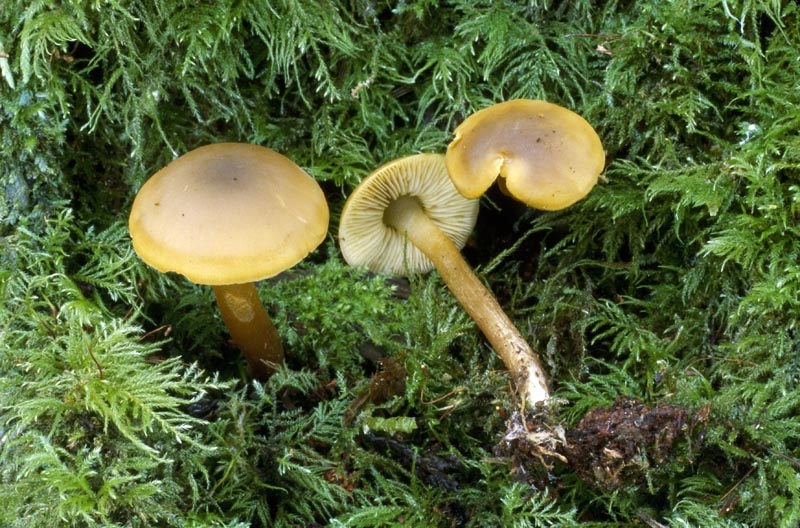
© Steve Trudell
Danny’s DNA Discoveries – Callistosporiaceae of the PNW (Tricholomatineae)
by Danny Miller
|
|
Danny’s DNA Discoveries – Callistosporiaceae of the PNW (Tricholomatineae)
|
|
Introduction
Callistosporium - greasy capped olive-yellow-brown collybioids growing on wood (sometimes buried) that turn bright red in KOH. Pseudolaccaria - nondescript little white spored mushrooms easily confused with Pseudoomphalina, but bitter tasting. Possible indented cap that is slightly scurfy with slightly decurrent gills. Macrocybe - famous in the tropics for growing gigantic edible gilled mushrooms several feet across with one cluster weighing over 60 pounds, but unfortunately not found here. abundant common uncommon rare - colour codes match my Pictorial Key and are my opinions and probably reflect my bias of living in W WA. Rare species may be locally common in certain places at certain times. |
|
Callistosporium Callistosporium luteo-olivaceum (New England) -a greasy capped olive-yellow-brown collybioid growing on wood (sometimes buried) that turns violet in KOH. Caps often >2cm across. Spores 4.5-6.5x3-4.5u. There is some ITS variation throughout the world. Local west coast sequences vary from east coast type area sequences by about 3 bp and 3 indels and 3 ambiguous characters, but EU sequences vary twice as much as that and one paper considered them all the same species, with no known ecological or morphological differences. Callistosporium graminicolor WA - Our locally described species was thought to be a synonym, but with ITS DNA almost 10% different, it is indeed a distinct species. They say the caps may be smaller (<2cm across), KOH turns red-brown and the spores are larger (6-8x4-5.5u). Callistosporium luteo-olivaceum (2 images) © Yi-Min Wang, C. graminicolor (2 images) © Harte Singer |
|
Pseudolaccaria Pseudolaccaria pachyphylla EU (=P. fellea NY?) - a quite variable and nondescript hard to identify little white spored mushroom easily confused with Pseudoomphalina, but bitter tasting. Possible indented cap that is slightly scurfy with slightly decurrent gills. The spores are somewhat amyloid (like Pseudoomphalina) but that can be hard to detect so some sources say amyloid and some say inamyloid. Some say that Pseudolaccaria fellea is the same species, but others say maybe not. NA sequences are about 2 bp and 2 indels different than EU sequences. Furthermore, some say that in NA it doesn't have cheilocystidia nor caulocystidia, but in the EU it does. Others, when looking for cystidia in P. pachyphylla say "cystidia absent to abundant" making it unclear if these differences really are consistent, and making it unclear if the species are the same. If not, we should be using our local name Pseudolaccaria fellea instead of P. pachyphylla. Pseudolaccaria "small spores" - One collection in CA and one in WA had much smaller spores (<6.5 x 4.5u instead of 7.5-11 x 5-6u). We need to find it again and sequence it. Pseudolaccaria pachyphylla © Buck McAdoo, Yi-Min Wang (3 images), and Connor Dooley |